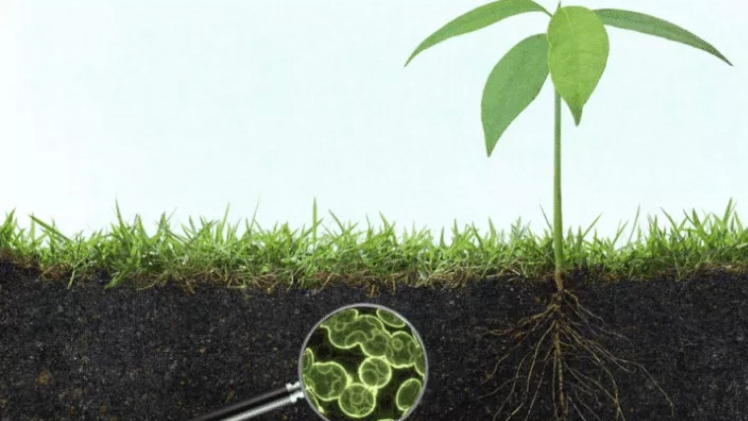Farmers have always strived to improve the soil’s chemical and physical properties, so that diverse nutrients are available to plants, soil retains more moisture, and plant root growth is facilitated. However, farmers might have overlooked the importance of the thriving diversity of microbes in the ground.
Millions of microorganisms are found in soil and plants, and together they make up a microbial community known as the microbiome. This community, which includes several microorganisms like bacteria, fungi, viruses, protozoa, and archaea, can influence crop output and plant growth in both favorable and unfavorable ways. Numerous elements, such as the environment, the physical characteristics of the soil, the availability of nutrients, and the types of plants, impact the composition of a given microbiome.
ROLE OF SOIL MICROBIOME
Up to 98.8% of the food we eat is produced by different types of soils and associated bacteria. As per Food and Agriculture Organization (FAO), depending on the terrain, soil erosion might lead to 20–80% agricultural yield losses due to human activities and climate change. Additionally, only 0.25 to 1.5mm of new topsoil (the topmost, organically rich layer of soil, often the top 5 to 10 inches) is produced yearly.
Although soil is often seen primarily as a source of plant nutrients, it is a complex ecosystem. Researchers have discovered that reservoirs of subsurface soil microbiomes may be crucial for the soil formation, the biodegradation of pollutants, and the preservation of groundwater quality.
SOIL MICROBIOME ASSISTS PLANTS IN DEVELOPING TOLERANCE TO DROUGHT AND HEAT
Recent studies have demonstrated that by introducing diverse microbiota, such as fungi or bacteria that colonize other species, into essential food crops, they can be rendered noticeably more stress resistant. An excellent example is Mycorrhizal fungi, which colonize plant roots and aid their soil penetration. In the UK, a certified mycorrhizal product aids in the establishment of seedlings. To improve the plants’ access to moisture and nutrients, the fungi that colonize the seedlings’ root systems send out networks of their underground filaments, known as hyphae. This is a mutually beneficial interaction because the fungi rely on photosynthesis in plants to obtain the sugars they require to develop.
Glomalin, a glycoprotein secreted by fungi to coat their hyphae, can encourage soil particle aggregation, increasing moisture retention. But in addition to improving fundamental aspects of plant biology, the soil microbiome can also affect more subtle features. Field trials of wheat, maize, barley, rice, and soybeans that were produced using seeds coated in fungal spores derived from heat- and salt-resistant plants are currently taking place in various parts of the United States to determine the ideal fungus for each crop and environment.
A DIVERSE SOIL MICROBIOME IS ESSENTIAL FOR SOIL HEALTH AND CROP PRODUCTIVITY
Three essential natural resources are needed for agricultural productivity: light, water, and good soil. To fulfill the rising demand for food requirements worldwide, agriculture approaches that do not rely on increased water usage and fertilizers must be used. A healthy microbiome can support its host by promoting plant growth, improving nutrient utilization, and preventing pests and phytopathogens.
Soils are home to millions of species and billions of individual organisms, ranging from tiny microbes to larger creatures like ants and earthworms. One gram of soil can support thousands of unique species, including entities from all three domains of life. The largest group, in terms of variety and number, is composed of bacterial species. The diversity of a microbial inoculum is now widely regarded as just as significant as its capacity to promote plant growth.
CONCLUSION
The ability of plants to generate food, fuel, and fiber for an expanding global population depends critically on the condition of the soil. The so-called “phytobiome”—the microbiota associated with soil and plants—may be significantly impacted by agricultural intensification due to high resource consumption and low crop diversification, which can harm essential ecosystem functions.
Through further research and innovation, agricultural productivity can benefit immensely by using the functional potential of the microbiome associated with plants. Scientists are exploring new scientific techniques to monitor the flow of nutrients via a plant, its microbiome, and the soil around it. These tools will open up new possibilities for developing more effective microbial consortia.

